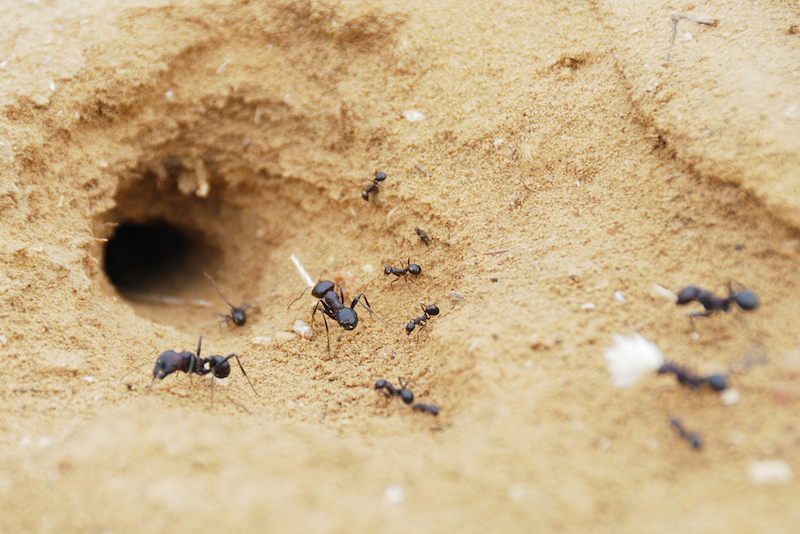Butt-First, Ants Have No Problem Navigating Backward

Foraging ants navigate so well, they can even do it backward, a new study finds.
Researchers had theorized that ants could memorize their landscape to navigate. However, the insects had been observed walking home in reverse, which contradicts the assumption that the ants relied on specific visual memory of the landscape to navigate. In a new study, scientists found that ants use both the landscape and clues from the sky to trek backward.
A team of scientists studied a colony of foraging desert ants (Cataglyphis velox). Though the ants would usually walk forward when carrying food back to the nest, they would move backward to drag larger items home, the researchers said. To test the insects' navigation skills, the researchers gave the ants either a small or large piece of cookie and placed them at a fork in the route to their nest. [Image Gallery: Ants of the World]
Regardless of their body orientation, the insects could make their way home, the scientists found. The researchers observed the ants using the sun and their memory of the landscape to maintain the correct route. The experiments also showed that ants walking backward would occasionally look behind them, checking their surroundings and adjusting course as needed.
"This suggests that they align their body forward to recognize the scene and to recover the direction," the study's co-first author Michael Mangan, a senior lecturer in computer science at the University of Lincoln in the United Kingdom, said in a video about the research. "They can then memorize this direction and subsequently follow it backward."
According to the researchers, these findings suggest ants have more complex spatial awareness. Rather than navigating relative to their own position, the ants seem to display an understanding of spatial relations in the external world, the scientists said.
"Ants have a relatively tiny brain, less than the size of a pinhead," study author Barbara Webb, a professor in the School of Informatics at the University of Edinburgh, said in a statement. "Yet they can navigate successfully under many difficult conditions, including going backward. Understanding their behavior gives us new insights into brain function, and has inspired us to build robot systems that mimic their functions."
Sign up for the Live Science daily newsletter now
Get the world’s most fascinating discoveries delivered straight to your inbox.
In future studies, the researchers said the relationship between brain regions could be determined. This would not only offer insight into the insect's complex navigational skills, but could be applied to the development of computer algorithms to guide robots, according to the research team.
Results of the study are detailed in a paper published online Jan. 19 in the journal Current Biology.
Original article on Live Science.










